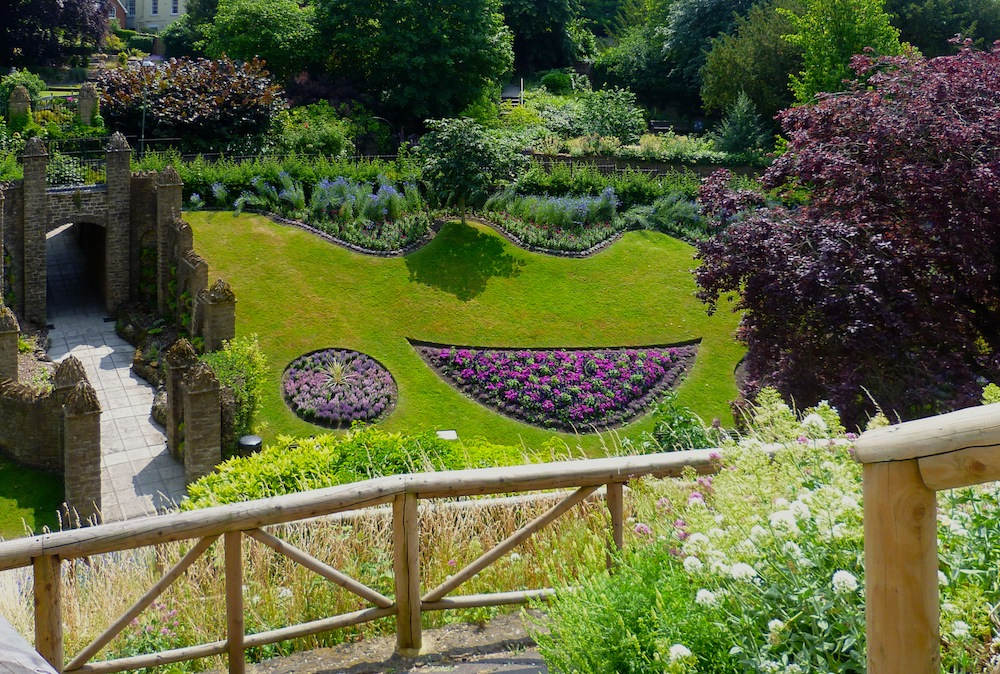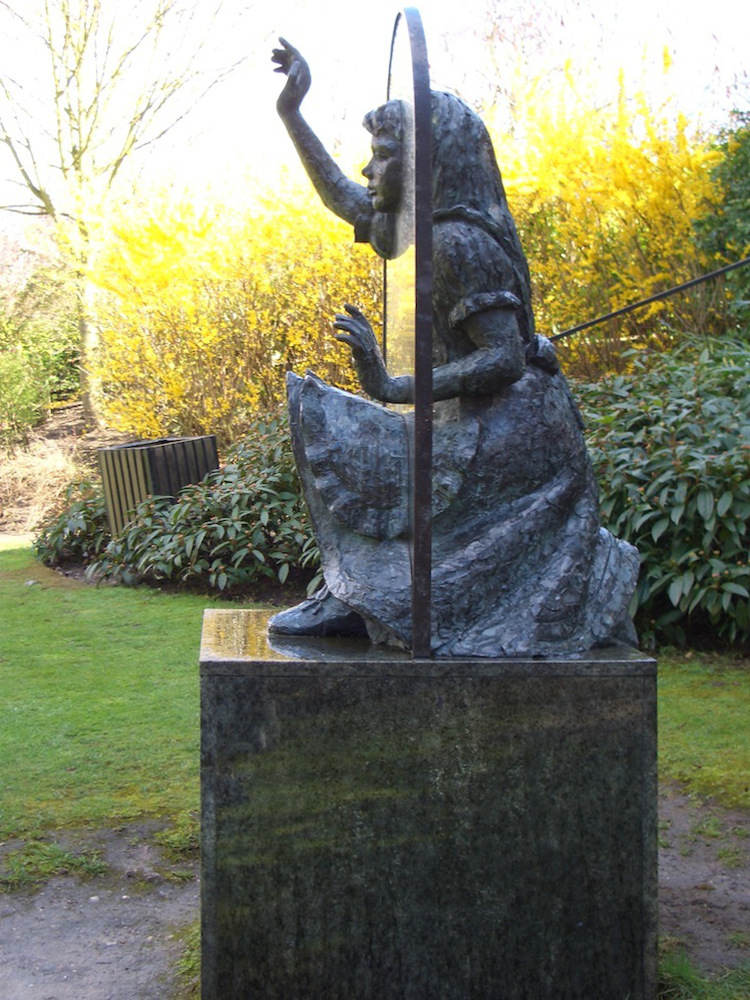Photographs c.2005 and 2013 by the author. [You may use these images without prior permission for any scholarly or educational purpose as long as you (1) credit the photographer and (2) link your document to the Victorian Web or credit it in a print document. Click on the images for larger pictures.]


Guildford Castle and its grounds, Guildford, Surrey. Acquired for the public in 1885, and landscaped by Henry Peak, who had been the Borough Surveyor and Architect from the mid-1860s: a little pond at the foot of the keep is known as "Peak's Pond." Opened in 1888 in honour of Queen Victoria's Golden Jubilee. Ian Nairn and Nikolaus Pevsner feel that the "ornate Late-Victorian landscaping" gives a "faintly bizarre air" to the keep of of the ancient Norman castle on its motte. But Peak's work seems to have been largely the fundamental layout, "using the best features from three prize winning plans and keeping some features which were already in place such as the paths and a circular flowerbed" ("Guildford"). There were some flowers then, but large-scale showy annual bedding was introduced only later, in the 1940s. Peak also introduced the Victorian bandstand, essential to any Victorian pleasure ground. Nowadays, the gardens are always beautiful in any season: spring, with blossoming trees, and summer with a different palette of flowers, are represented above.


Left: The Castle grounds from just to the side of the motte. Right: View from the steps up to the keep. The park has various literary associations. Charles Dodgson leased "The Chestnuts," a recently built Georgian house on Castle Hill just behind the castle grounds, for his sisters, and often visited them, loving the views across the Surrey countryside that made this area such a good strategic spot for a castle. He must have walked though here many, many times, and his work is now commemorated by two sculptures by Jeanne Argent — one in the grounds, and one at nearby Millmead (1990). The one shown at the side here is a few steps down from the bowling green. Caroll died and was buried in Guildford, at the Mount Cemetery.

But it was H. G. Wells who actually wrote about the castle grounds: Mr Hoopdriver, the hero of The Wheels of Chance, is very much a Wellsian figure, an apprentice draper and keen cyclist as Wells himself was once. He passes through Guildford on his ambitious cycling holiday to the south coast, and visits these grounds, noting the geraniums round the castle (so there were flowers then too), and paying 2p. to go up the keep of "the old bramble-bearing, fern-beset ruin," from which he admires the view across "the waves of blue upland that rose, one behind another, across the Weald, to the hazy altitudes of Hindhead and Butser" (67-68; Butser Hill is over the Surrey border in Hampshire). Soon after this delightful interlude, somewhat complicated by meeting the "Young Lady in Grey" there, which made him trip clumsily back down the steps, Hoopdriver is on the road again.
Sources
Banerjee, Jacqueline. Literary Surrey. New ed. Headley Down: John Owen Smith, 2011. Print.
"Guildford: The Castle Gardens." Exploring Surrey's Past. Web. 4 August 2013.
Nairn, Ian and Nikolaus Pevsner, rev. Bridget Cherry. The Buildings of England: Surrey. 2nd ed. London: Penguin, 1971. Print.
Visit Guildford Leaflet (Guildford College Group). Web. 4 August 2013.
The Wheels of Chance: A Holiday Adventure. London: Dent, 1896. Internet Archive. Web. 4 August 2013.
Last modified 4 August 2013